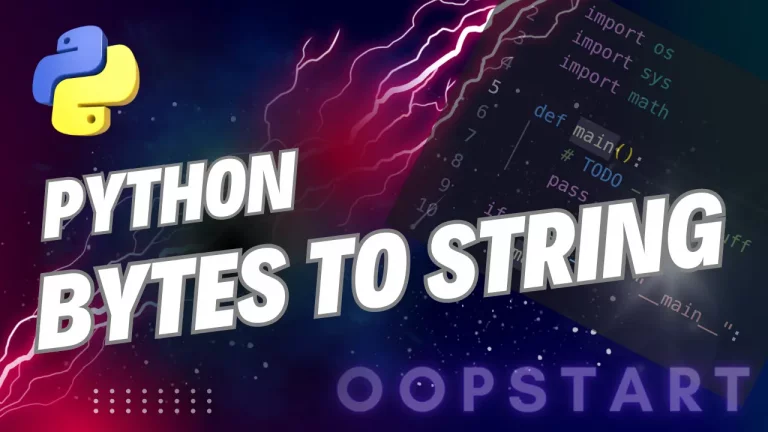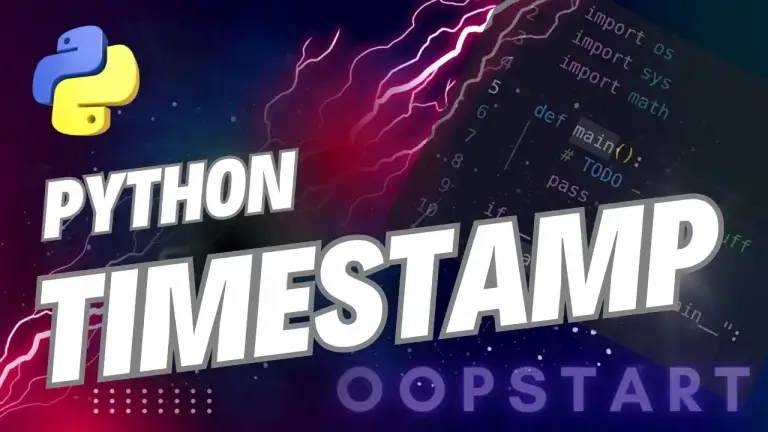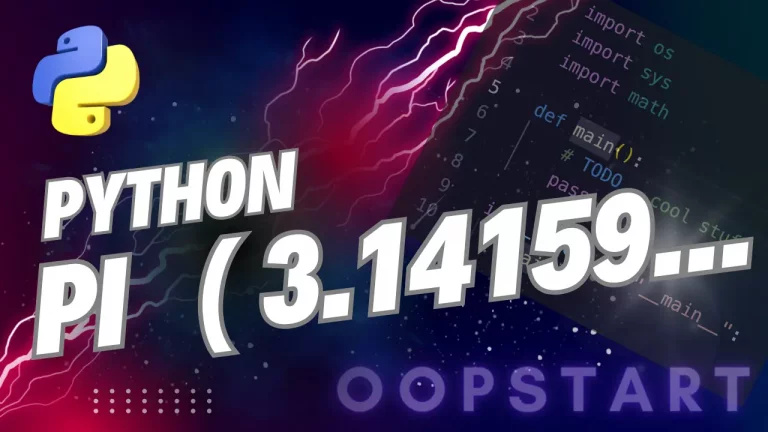Python String to Bytes: Ultimate Guide
In Python string to bytes conversions are an essential operation when dealing with file I/O, data transmission, or cryptographic functions. Python provides several methods to convert strings to bytes, allowing you to encode text data into a format that’s suitable for binary operations.
Understanding how to convert Python strings to bytes is crucial for tasks involving data encoding, network communication, and file manipulation.
By the end of this guide, you’ll have a thorough understanding of how to convert a Python string to bytes.
Table of Contents
Why Convert a String to Bytes in Python?
Strings in Python are sequences of Unicode characters, while bytes are sequences of raw 8-bit values. Converting strings to bytes allows you to:
- Transmit Data: Send data over networks in a binary format.
- Store Data: Save data in binary files, like images or executables.
- Process Data: Encrypt, compress, or hash data, as these processes usually require byte sequences.
- Interoperate with Low-Level Systems: Many system-level operations and libraries (like sockets or file I/O) require data in bytes format.
Python provides a straightforward way to convert strings to bytes using the encode() method.
Converting String to Bytes Using encode()
The encode() method is the most common way to convert a string to bytes in Python. It encodes a string using the specified character encoding and returns the encoded bytes.
Syntax of encode():
string.encode(encoding='utf-8', errors='strict')
encoding: Specifies the encoding format (default is'utf-8').errors: Specifies how to handle encoding errors (default is'strict').
Example: Converting a String to Bytes
text = "Hello, Python!"
byte_data = text.encode()
print(byte_data) # Output: b'Hello, Python!'
In this example, the string "Hello, Python!" is converted to bytes using the default UTF-8 encoding, producing b'Hello, Python!'.
Common Encoding Formats
Python supports various encoding formats, each with specific use cases. Here are some of the most commonly used encodings:
1. UTF-8 (Default Encoding)
UTF-8 is the most widely used encoding format for text data, as it can represent any character in the Unicode standard.
byte_data = "Hello, Python!".encode('utf-8')
2. ASCII
ASCII is limited to characters in the English alphabet and symbols. It’s useful for plain text without special characters.
byte_data = "Hello".encode('ascii')
3. ISO-8859-1 (Latin-1)
ISO-8859-1, also known as Latin-1, is commonly used for Western European languages. It can represent characters in the range of 0–255.
byte_data = "Café".encode('iso-8859-1')
4. UTF-16 and UTF-32
UTF-16 and UTF-32 use fixed-width encoding, where each character is represented by 2 or 4 bytes, respectively. These encodings are useful for specific applications that require fixed-width character representations.
byte_data_utf16 = "Hello".encode('utf-16')
byte_data_utf32 = "Hello".encode('utf-32')
Example: Converting Using Different Encodings
text = "Hello, Python!"
byte_utf8 = text.encode('utf-8')
byte_ascii = text.encode('ascii')
byte_utf16 = text.encode('utf-16')
print(byte_utf8) # Output: b'Hello, Python!'
print(byte_ascii) # Output: b'Hello, Python!'
print(byte_utf16) # Output: b'\xff\xfeH\x00e\x00l\x00l\x00o\x00,\x00 \x00P\x00y\x00t\x00h\x00o\x00n\x00!\x00'
Handling Encoding Errors
When converting a string to bytes, you might encounter characters that cannot be encoded in the specified format. The errors parameter allows you to specify how to handle such errors.
Error Handling Options:
strict: Raises aUnicodeEncodeErrorfor characters that cannot be encoded (default behavior).ignore: Ignores characters that cannot be encoded.replace: Replaces characters that cannot be encoded with a replacement character, such as?or the Unicode replacement character�.backslashreplace: Replaces characters with their backslash escape sequences.
Example: Using errors='ignore'
text = "Hello, Café!"
byte_data = text.encode('ascii', errors='ignore')
print(byte_data) # Output: b'Hello, Caf!'
Example: Using errors='replace'
text = "Hello, Café!"
byte_data = text.encode('ascii', errors='replace')
print(byte_data) # Output: b'Hello, Caf?'
By specifying different error-handling options, you can control how Python deals with characters that aren’t supported by the encoding format.
Converting Back from Bytes to String
Once you have converted a string to bytes, you might need to convert it back to a string. This can be done using the decode() method, which is the reverse of encode().
Example: Converting Bytes to String
byte_data = b'Hello, Python!'
text = byte_data.decode('utf-8')
print(text) # Output: Hello, Python!
Make sure to use the same encoding format for decode() as was used for encode() to avoid errors.
Practical Applications of Converting Strings to Bytes
1. Writing Bytes to a Binary File
Binary files, like images or videos, require byte sequences for reading and writing. You can convert a string to bytes before writing it to a binary file.
text = "Hello, Python!"
byte_data = text.encode('utf-8')
with open("output.bin", "wb") as file:
file.write(byte_data)
2. Sending Data over a Network
Network protocols often transmit data in bytes. You can convert strings to bytes before sending them over sockets.
import socket
message = "Hello, Server!"
byte_message = message.encode('utf-8')
# Create a socket and send the byte message
sock = socket.socket(socket.AF_INET, socket.SOCK_STREAM)
sock.connect(('localhost', 12345))
sock.sendall(byte_message)
sock.close()
3. Hashing and Encryption
Cryptographic algorithms require byte data as input. Converting strings to bytes is essential for hashing or encrypting strings.
import hashlib
text = "Hello, Python!"
byte_data = text.encode('utf-8')
hash_object = hashlib.sha256(byte_data)
print(hash_object.hexdigest())
Best Practices for Converting Strings to Bytes
- Use UTF-8 Encoding When Possible: UTF-8 is the default encoding in Python and can handle all Unicode characters, making it a versatile choice for most applications.
- Specify Error Handling for Non-ASCII Data: When dealing with non-ASCII characters, set the
errorsparameter to avoid unexpected crashes due to encoding errors. - Convert Back to Strings with
decode(): If you need to read or display byte data as text, use thedecode()method with the appropriate encoding. - Choose Encodings Based on Data Needs: For specific character sets or languages, select an encoding format that suits the data. For example, use ASCII for English-only text, or ISO-8859-1 for Western European languages.
- Handle Encodings Explicitly in Network and File I/O: When reading from or writing to files or transmitting data over networks, explicitly specify the encoding format to ensure consistent behavior across different systems.
Summary of Key Concepts
- Converting Python strings to bytes is done using the
encode()method, which requires an encoding format like UTF-8, ASCII, or ISO-8859-1. - Different encoding formats serve various use cases, with UTF-8 being the most commonly used and versatile format.
- The
errorsparameter inencode()allows you to handle characters that aren’t supported by the encoding format through options likeignore,replace, andbackslashreplace. decode()is used to convert bytes back to a string, allowing you to return to a text representation when needed.- Converting strings to bytes is essential for tasks involving file I/O, network communication, and cryptographic processing.
Check out our FREE Learn Python Programming Masterclass to hone your skills or learn from scratch.
The course covers everything from first principles to Graphical User Interfaces and Machine Learning
You can read more about the string encode method at w3schools, here.
FAQ
Q1: Can I convert a string containing non-ASCII characters (e.g., accents or symbols) to bytes?
A1: Yes, you can convert a string with non-ASCII characters to bytes by specifying an encoding format that supports those characters, such as UTF-8 or ISO-8859-1. UTF-8 is a versatile choice as it can handle a wide range of Unicode characters.
Example:
text = "Café"
byte_data = text.encode('utf-8')
print(byte_data) # Output: b'Caf\xc3\xa9'
Q2: What happens if I try to encode a string with characters not supported by the chosen encoding format?
A2: If the encoding format doesn’t support certain characters, Python will raise a UnicodeEncodeError. You can handle this by using the errors parameter in encode() and setting it to 'ignore', 'replace', or 'backslashreplace'.
Example:
text = "Café"
byte_data = text.encode('ascii', errors='replace')
print(byte_data) # Output: b'Caf?'
Q3: How do I decode bytes back into a string?
A3: Use the decode() method on the bytes object, specifying the same encoding format that was used to encode it. This will convert the bytes back to a string.
Example:
byte_data = b'Hello, Python!'
text = byte_data.decode('utf-8')
print(text) # Output: Hello, Python!
Q4: Can I write bytes directly to a text file?
A4: While you can write bytes to a file, it should be opened in binary mode ('wb'). Text files normally handle strings, so if you’re working with bytes, open the file in binary mode to prevent encoding issues.
Example:
byte_data = b'Hello, Python!'
with open("output.bin", "wb") as file:
file.write(byte_data)
Q5: Why do I see strange characters or symbols when I print bytes?
A5: Bytes represent binary data, so when you print them directly, Python shows a string representation that may include escape sequences like \x for non-printable characters. Decode the bytes to convert them back into a readable string.
Example:
byte_data = b'Caf\xc3\xa9'
print(byte_data.decode('utf-8')) # Output: Café
Q6: How can I ensure my byte data is compatible across different systems or environments?
A6: Use UTF-8 encoding when converting strings to bytes, as it’s the most widely supported encoding and can handle all Unicode characters. Explicitly specify UTF-8 during both encoding and decoding to maintain consistency.
Q7: Can I concatenate multiple byte sequences?
A7: Yes, you can concatenate multiple byte sequences using the + operator. Note that you cannot concatenate bytes directly with strings; all elements must be in bytes format.
Example:
byte_data1 = b'Hello, '
byte_data2 = b'Python!'
combined = byte_data1 + byte_data2
print(combined) # Output: b'Hello, Python!'
Q8: How do I convert a hexadecimal string to bytes?
A8: You can use the bytes.fromhex() method to convert a hexadecimal string to bytes. This is useful for processing binary data represented in hexadecimal form.
Example:
hex_string = "48656c6c6f"
byte_data = bytes.fromhex(hex_string)
print(byte_data) # Output: b'Hello'
Q9: Is there a way to encode a string to bytes without specifying an encoding format?
A9: If you omit the encoding format in encode(), Python defaults to UTF-8 encoding. However, it’s best practice to specify the encoding explicitly to avoid potential compatibility issues with other systems.
Q10: Can I store binary data (bytes) in a database?
A10: Yes, you can store binary data in a database by converting the string to bytes before storing it. Make sure to use a binary or BLOB column type in the database to handle byte data. When retrieving the data, you can decode it back into a string as needed.








